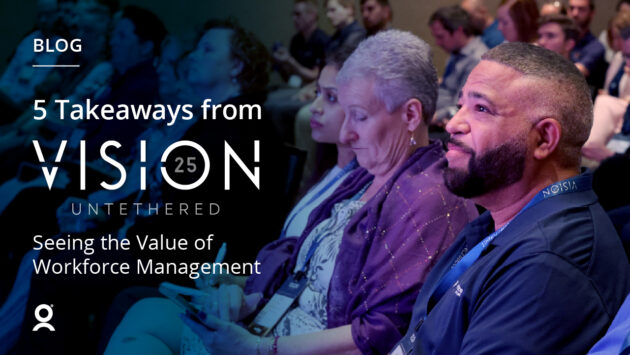Workplace compliance is the very foundation for any successful workplace experience. While your organization should always continue to measure and refine its employee engagement initiatives, prioritizing compliance should be the very first step in motivating your people. This will create the strongest possible foundation for your HR department to use as a steppingstone for additional strategies and programs aimed at enhancing the employee experience even further. Without the vital foundation of proper workplace compliance, your employees will feel unhappy and disengaged from the get-go, and any further employee motivation initiatives will prove baseless and disjointed.
An unhappy and unmotivated workforce leads to high employee turnover, increased absenteeism, diminished productivity, a less energetic organization, and lower profits. In contrast, an efficient HR department that is laser-focused on compliance provides valuable structure to your organization, encourages a culture of engagement and innovation, and allows your business to flourish.
Here are 6 areas in which workplace compliance acts as the cornerstone of a positive employee experience:
1. General Employment and Labor Law Compliance
HR personnel must be knowledgeable about federal and state leave laws, wage and hour laws, scheduling requirements, nondiscrimination laws, and collective bargaining rights as well as regulations, contracts, and company policies. Workplace noncompliance commonly results in employee complaints and lawsuits based on unfair or unlawful practices, an unsafe work environment, or general discontent. Your employees should rest assured that the very basics of their employment are covered.
2. Diversity and Inclusion
A great deal of research shows that diversity in the workplace leads to expanded creativity, increased productivity, better problem solving, and, most of all, a professional experience founded on both equality and inclusion. Under federal law, your employees have legal rights even before they join your team. During the hiring process, recruitment teams cannot discriminate based on an applicant’s race, color, national origin, religion, sex (including pregnancy and sexual orientation), disability, or age.
Recruiting and retaining a diverse workforce allows employees from different walks of life to collaborate, share experiences, and offer various global perspectives to achieve common business goals. Employers should put internal policies in place to ensure that all employees are treated fairly and feel safe and welcomed. Accordingly, HR departments must create conduct codes, moderate workplace behavior and dialogue, establish sensitivity programs, and review employee job information to ensure that no employees are victims of a discriminatory atmosphere.
3. Compensation and Benefits
In addition to prohibiting discrimination in any term or condition of employment—such as hiring, firing, pay, benefits, promotions, layoffs, or job assignments—Title VII, the ADEA, and the ADA prohibit compensation discrimination on the basis of race, color, national origin, religion, sex (including pregnancy and sexual orientation), disability, or age. In any case of unequal pay among employees, there must be a legitimate, non-discriminatory reason for the pay difference.
HR departments should regularly evaluate competitive pay practices and establishing a fair compensation structure for workers. A salary figure isn’t the only motivator for your workforce, but most often it is an employee’s primary reason for employment in the first place. Employees who are compensated fairly are far more likely to feel happier in their roles, which in turn is reflected in their job performance.
Take A Tour
See the WorkForce Suite’s Absence Compliance Tracker (ACT) in action to discover the capabilities that can help your organization manage all aspects of employee time off, leave, and accommodation requests.
4. Mandatory Training
In some cases, companies may be legally required to provide mandatory safety training depending on the task the workers perform, the specific hazard they may encounter on the job, and the specific regulations those tasks and hazards fall under based on the job and the industry. For example, OSHA has a number of concrete training standards that are enforceable by law.
Internally, organizations must make sure that employees receive the training they need to excel. This may include orientation training for the general workforce, leadership training for supervisors and managers, or professional development opportunities for workers interested in advancement. Proper training is a key first step in creating a culture of innovation. Instilling confidence in your employees optimizes productivity and encourages them to bring new, creative ideas to the table.
5. Workplace Safety
Comprehensive job training should be coupled with internal policies to prevent employee illnesses, injuries, and fatalities. An unsafe or unsanitary workplace is not an environment in which your employees are motivated to perform at their best. In response to the COVID-19 pandemic, HR departments should acquire up-to-date information about local COVID-19 safety practices in all locations where employees work. These practices may include:
- Providing sanitization materials to workers and visitors
- Routinely cleaning and disinfecting all high-touch areas
- Conducting daily health checks
- Excluding sick employees from the workplace and following applicable leave laws
- Promptly notifying workers of any worksite exposure to COVID-19
6. Protection of Whistleblowers
Work-related fraud and misconduct commonly go unreported because many employees worry about retaliation if they complain. HR departments must uphold a policy of confidentiality and dependency so that employees can confidently disclose their workplace concerns without fear of losing their jobs or facing discipline. Effectively protecting whistleblowers requires leadership commitment, a “speak up” organizational culture, and a prevention-oriented system.
Final Thoughts
Workplace compliance certainly isn’t the only initiative that your organization should utilize to motivate your employees, but it should be a mandatory first step. Without it, all other organizational initiatives will struggle to find two legs to stand on. HR departments have a tremendous opportunity to create a positive and productive work environment by balancing the needs of the employer and the employees. It all starts with workplace compliance and equipping staff with the tools they need to succeed.






